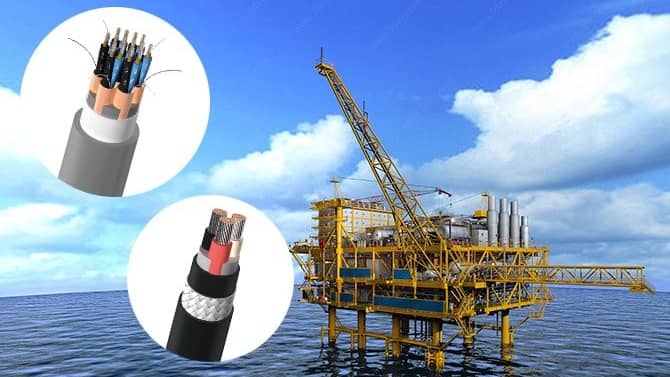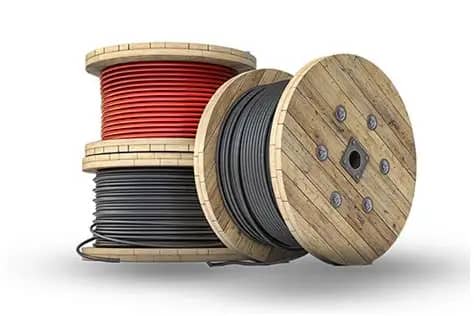Exploring The Essential Role Of Shipboard Wire In Modern Marine Electrical Systems
 Jul 11,2025
Jul 11,2025

 Suke
Suke
The modern maritime industry relies heavily on sophisticated electrical systems to ensure the smooth operation of vessels, from propulsion and navigation to communication and safety. At the heart of these systems lies a critical yet often overlooked component: shipboard wire. These specialized cables are the lifelines of marine electrical networks, enabling the transmission of power and data across the ship. As vessels become more advanced, the role of shipboard wire has grown increasingly complex, demanding higher standards of durability, safety, and efficiency. This article delves into the indispensable role of shipboard wire in modern marine electrical systems, exploring its design, materials, applications, and the challenges it faces in harsh marine environments.
The Design and Construction of Shipboard Wire
Shipboard wire is engineered to meet the unique demands of marine environments. Unlike standard electrical cables, these wires are designed to withstand extreme conditions, including constant exposure to moisture, saltwater, and temperature fluctuations. The construction typically involves multiple layers of insulation and shielding to prevent corrosion and electrical interference. For instance, the inner conductor is often made of high-quality copper or aluminum for optimal conductivity, while the outer layers may include materials like polyvinyl chloride (PVC) or cross-linked polyethylene (XLPE) for added protection.
Another critical aspect of shipboard wire design is its flexibility. Given the confined spaces and complex routing paths on ships, these wires must be highly flexible to facilitate installation and maintenance. Additionally, they are often fire-resistant to comply with stringent marine safety regulations. The combination of robust materials and thoughtful design ensures that shipboard wire can perform reliably under the most challenging conditions.

Materials and Their Impact on Performance
The choice of materials for shipboard wire is pivotal in determining its performance and longevity. Copper remains the preferred material for conductors due to its excellent electrical conductivity and resistance to corrosion. However, aluminum is sometimes used as a cost-effective alternative, though it requires thicker gauges to achieve similar performance. The insulation materials, such as PVC or XLPE, are selected for their ability to resist moisture, chemicals, and mechanical stress.
Shielding is another crucial factor, especially for wires carrying sensitive data signals. Metallic braids or foil shields are commonly employed to protect against electromagnetic interference (EMI), which can disrupt communication and control systems. Furthermore, the outer jacket of the wire is often made from materials that are resistant to oil, abrasion, and UV radiation, ensuring durability in both indoor and outdoor marine applications. These material choices collectively enhance the wire's reliability and safety.
Applications in Modern Marine Electrical Systems
Shipboard wire is used in a wide array of applications across a vessel's electrical systems. One of the most critical uses is in power distribution, where these wires connect generators, switchboards, and loads to ensure a steady supply of electricity. They are also integral to propulsion systems, linking motors and control units to enable precise maneuvering and speed control.
Beyond power transmission, shipboard wire plays a vital role in communication and navigation systems. Ethernet cables, coaxial cables, and fiber-optic wires are all examples of specialized shipboard wires that facilitate data exchange between radar, GPS, and other electronic devices. Safety systems, such as fire alarms and emergency lighting, also rely on these wires to function reliably during crises. The versatility of shipboard wire makes it indispensable across all facets of marine operations.
Challenges and Innovations in Shipboard Wire Technology
Despite their advanced design, shipboard wires face numerous challenges in marine environments. Corrosion is a persistent issue, particularly in areas with high humidity and salt exposure. To combat this, manufacturers are developing wires with enhanced anti-corrosive coatings and stainless steel components. Another challenge is the increasing complexity of marine electrical systems, which demands higher bandwidth and faster data transmission rates. This has led to the adoption of fiber-optic cables and other high-performance alternatives.
The need for sustainability also drives innovations in shipboard wire technology. Eco-friendly materials and manufacturing processes are being explored to reduce the environmental impact of these components. Additionally, smart wires with embedded sensors are being tested to monitor conditions like temperature and strain in real time, enabling predictive maintenance and reducing downtime. These advancements are shaping the future of marine electrical systems, making them more efficient and resilient.
Regulatory Standards and Compliance
Stringent international standards govern the production and installation of shipboard wire to ensure safety and reliability. Organizations such as the International Electrotechnical Commission (IEC) and the Institute of Electrical and Electronics Engineers (IEEE) have established guidelines for wire construction, testing, and performance. Compliance with these standards is mandatory for all marine electrical components, as failure to meet them can result in catastrophic consequences.
Regular inspections and maintenance are also required to uphold these standards. Shipboard wires must undergo rigorous testing for factors like insulation resistance, voltage withstand, and flame retardancy. These measures are essential to prevent electrical failures that could jeopardize the vessel's operation and crew safety. By adhering to these regulations, the maritime industry can maintain the highest levels of safety and performance in its electrical systems.


 Home
Home Shipboard Wire Market Trend Analysis: Global Demand Growth and Selection Guide to 2025
Shipboard Wire Market Trend Analysis: Global Demand Growth and Selection Guide to 2025  You May Also Like
You May Also Like

 Tel
Tel
 Email
Email
 Address
Address













